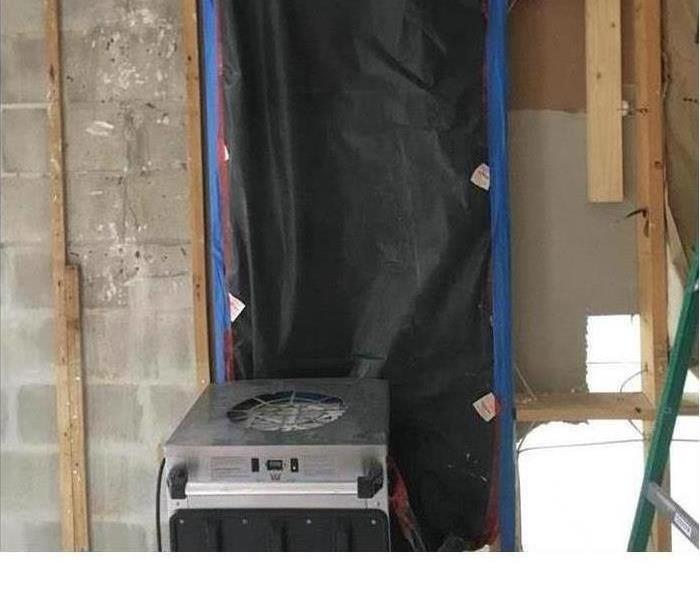Drying Chamber
1/4/2024 (Permalink)
The Essential Guide to Drying Chambers in Water Damage Restoration
Drying chambers, by nature, will limit the risk of moisture spreading. Because they can section off a specific area, the moisture is quickly pulled out of the air by dehumidifiers. If not sealed, the moisture would move throughout the building, potentially causing damage in other areas. Drying chambers can be established for any site requiring treatment, including small cavities, cupboards, and within walls.
A main concern with other treatment methods is how much resourcing is required to dry a given area. With drying chambers, you’re able to target the specific location you need to work on and not waste energy by the surrounding environment. If the flooring is all that needs to be treated, you’re not losing precious time and power to keep an entire room at the proper temperature, with the right amount of airflow. You’re simply applying energy to the damaged flooring, dramatically reducing resource requirements and saving yourself from other potential issues.
While drying chambers are efficient, they need to be implemented correctly to maximize their benefits.





 24/7 Emergency Service
24/7 Emergency Service